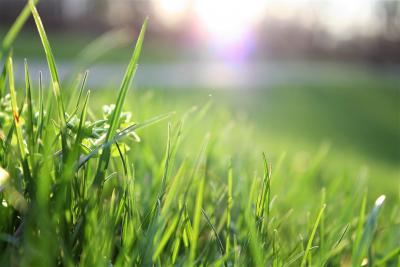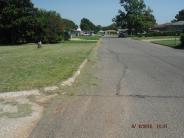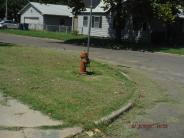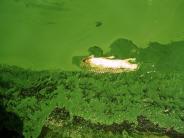Mowing Tips & Tricks
Buffalo Grass Care
Buffalo Grass is an Oklahoma native grass species found commonly throughout the Great Plains states. Because it is a native grass, it is a very low maintenance lawn option. Buffalo Grass will grow in full sun and is also shade tolerant. It grows to a maximum height of 8-10 inches and has very low watering and fertilizer requirements. Here are some tips and tricks to help you best care for your Buffalo Grass Lawn:
1. Set Mower Blades to 2-3 inches - Mowing Buffalo Grass to a taller height inhibits weed growth and reduces watering requirements. Taller grass provides more shade to the soil below. This keeps weeds from establishing and reduces the amount of water that evaporates from the soil. This will reduce the amount of herbicide needed in the spring and will further reduce its, already minimal, watering needs.
2. Water Infrequently - Buffalo Grass lawns do not need much additional watering besides what they receive from natural rain events. Over-watering these lawns will actually encourage weed growth, which will require additional herbicide applications, or more time hand-pulling weeds. Buffalo Grass should only be watered to prevent the yard from turning brown and to a depth of 4-6 inches. To test this depth, use a screwdriver to probe into the ground. If it slides in easily to this depth, the yard has been sufficiently watered.
3. Plan Your Border Cuts - Mow around sidewalks, streets, and ditches in a way that prevents grass from accumulating in them. Grass clippings can clog storm drains or flow to our nearest water body, causing flooding and harmful algae blooms. The clippings from just one mowing can contribute up to 100 pounds of algae in our local creeks and ponds! This amount of algae growth can have a very negative impact on the water quality, along with the organisms that live there.
4. Bag & Compost or Mulch In-Place - Leave grass clippings "mulched" on the lawn to give back up to 25% of your lawn fertilizer needs! You can also bag and compost clippings to be used as fertilizer after they have been properly composted. More information on composting yard waste and kitchen waste can be found HERE.
5. Fertilizer Requirements - Buffalo Grass does not need a heavy fertilizer application, and can even be harmed by too much Nitrogen. Applications of fertilizer should be done in early spring after the threat of the last frost has passed. Nitrogen should be applied at a ratio of 1 pound for every 1,000 square feet of established turf. The Nitrogen, Phosphorus & Potassium (N-P-K) ratio should be in an amount of 3-1-2 or 4-1-2 for best results. Herbicides of 3,4-D should never be applied to these lawns unless specifically stated they are safe to use with Buffalo Grass.
Bermuda Grass Care
Bermuda Grass is an introduced species of grass originally from Africa. It is fast growing, extremely drought tolerant and very easy to establish in Oklahoma. It can survive long periods of high heat and drought by going completely dormant. Bermuda Grass requires more water and fertilizer during the summer months to stay green than Buffalo Grass, but it is a cheaper option upfront when choosing to establish a new lawn. Here are some tips and tricks to help you best care for your Bermuda Grass Lawn:
1. Set Mower Blades to 2" or less - Bermuda grass stays green longer if it's cut shorter. Never cut more than 1/3 of the grass length at once, as it may stress the lawn. Mowing the lawn at less than 1" is ideal, but can only be accomplished with a reel-type mower, or you may risk scalping the lawn.
2. Water Weekly - Watering should be done weekly and to a depth of 6 inches. To test this depth, use a screwdriver to probe into the ground. If it slides in easily to this depth, the yard has been sufficiently watered. More frequent watering is often required during the dry summer months to keep the grass from going dormant and turning brown.
3. Plan Your Border Cuts - Mow around sidewalks, streets, and ditches in a way that prevents grass from accumulating in them. Grass clippings can clog storm drains or flow to our nearest water body, causing flooding and harmful algae blooms. The clippings from just one mowing can contribute up to 100 pounds of algae in our local creeks and ponds! This amount of algae growth can have a very negative impact on the water quality, along with the organisms that live there.
4. Bag & Compost or Mulch In-Place - Leave grass clippings "mulched" on the lawn to give back up to 25% of your lawn fertilizer needs! You can also bag and compost clippings to be used as fertilizer after they have been properly composted. More information on composting yard waste and kitchen waste can be found HERE.
5. Fertilizer Requirements - Bermuda Grass does best when fertilized in early spring, after the threat of the last frost has passed. Fertilizer should be applied at a ratio of 2-5 pounds for every 1,000 square feet of established turf and at least 1 pound of that should be Nitrogen. The Nitrogen, Phosphorus & Potassium (N-P-K) ratio should be in an amount of 3-1-2 for best results.
Cool Season Grass Care
Cool season grasses such as Fescue or Kentucky Bluegrass are not normally recommended for our lawns here in Oklahoma. Both will do very well in areas of full-shade, but are not as heat and drought tolerant as our native Buffalo Grass and the introduced Bermuda Grass. It is possible to establish cool-season grasses, but their water and fertilizer requirements are extremely heavy. These are really only good options for use under trees or in other areas that receive very little direct sunlight.




